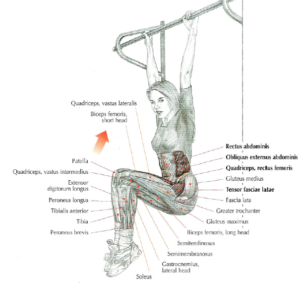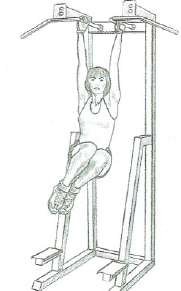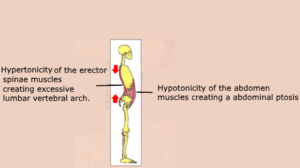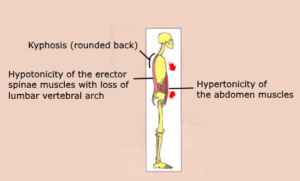What’s up ? This is THE stephane ANDRE ! I read a Frederic Delavier’s book « Strength Training Anatomy » and I learned good stuff.
Suspended on a chin-up bar :
-
Inhale and back up your knees as high as possible by approaching your knees to your torso.
-
Exhale at the end of the movement
This exercise works :
-
The iliopsoas, rectus femoris, tensor fasciae latae when you raise your legs.
-
The rectus abdominis and a little less obliques work when you move your knees to your torso.
To target the work on abs, it’s advisable to make small oscillations of thighs without never having the knees below the horizontal.
Attention
Rotations of the torso to the machine are proscribed for people suffering from low back or having already had a herniated disc.
Variant
By raising your knees on the side alternately to the right and to the left, obliques work more intensely.
Abdominal lumbar balance
It’s necessary to work in a balanced way the abdominal’s muscles and the back’s muscles (erector spinae). A lack of tone of hypertonicity of one of these two muscle groups can create a bad posture, and over time, create pathologies.
Example
Hypertonicity of the lower part of the erector spinae (sacro lumbar mass) with a hypotonicity of the muscles of the abdomen, will create a hyperlordosis with an abdominal ptosis. This postural defect can sometimes (if it is taken in time) be diminished by exercises of reinforcement of the abdominal muscles.
Conversely, hypertonicity of the abdominal muscles with loosening (hypotonicity) of the erectors spinae, especially in the upper part (multifidus spinae, longissimus, iliocostalis), will create a kyphosis (rounding back ) with loss of lumbar vertebral arch. This postural defect can sometimes (if it taken in time) be diminished by exercises of reinforcement of erectors spinae muscles.
Subscribe to my newsletter and share this article if you think it can help someone you know. Thank you.
-Steph



